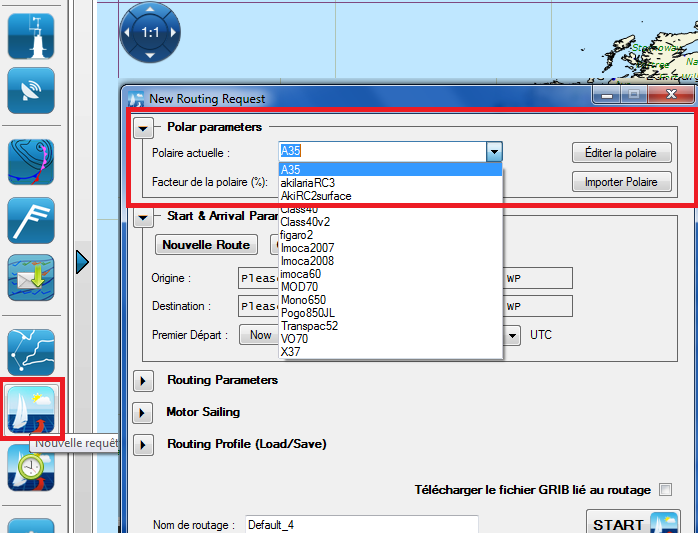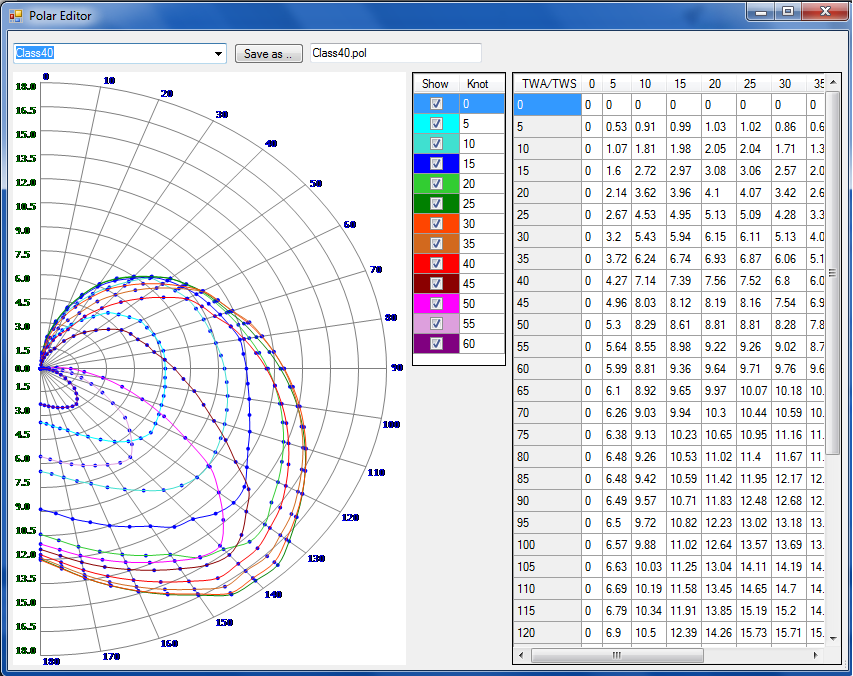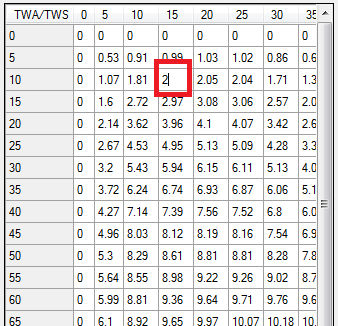Speed polar in our weather software Squid (Tuto 4) – Squid Sailing
Polar and velocity prediction , what is it? And what’s the objectif in Squid, our weather software ?
Previously, we learned to view a grib file and satellite image. Today we will learn about the polar. Why? Because it is used in multiple features of our weather software : Squid.
The weather software will need the polars for all route calculations compared with the performance of the boat.
What is it ?
Definition: This is the intended speed of the boat compared with the wind conditions.
Different polars are available in Squid. You can edit it and preview it in Squid.
Well, click on the Routing icon. You are required as the first element: the polar parameters !

After choosing your polar. A window opens with a graph. It shows, on the left, the polar and the different wind conditions.
On the shelves you find the expected speed compared with the angle of the wind.
On the right part of the window, this is the same data but in text version.
Top of the table is the wind speed. On the left there are the wind angles.

To edit a polar (as it may you seem inaccurate), it is very easy! Just click in the cell you want and change it.
For example, for 15 knots for an orientation of 10 ° compared with the axis of the boat.
Here, I will transform into a value of 1.98 seems more accurate to me 2 knots.

I can then edit each cell of the table. The graph is automatically adapted to new values.
After changing my polar, you can give it a name and save it. You will then find the suggestions with other polar.
If you already have drawn a polar other software, it is possible to integrate it in Squid. Click to import polar.
In addition to conventional polar, it is possible to change the percentage of the polar. It will also tend to decrease this percentage because it will be considered that does not push the boat to its full potential.
You are ready to configure the best start and routing. Your polar is now integrated in Squid. You can make a best start and a routing more accurate for your navigation. But we’ll see that for a later tutorial.
Next week we will see how to set a starting point and destination for your routing and possible way points.











